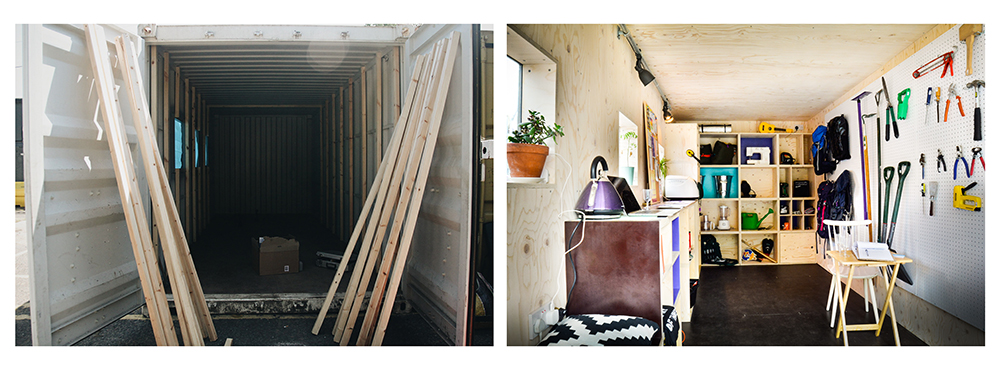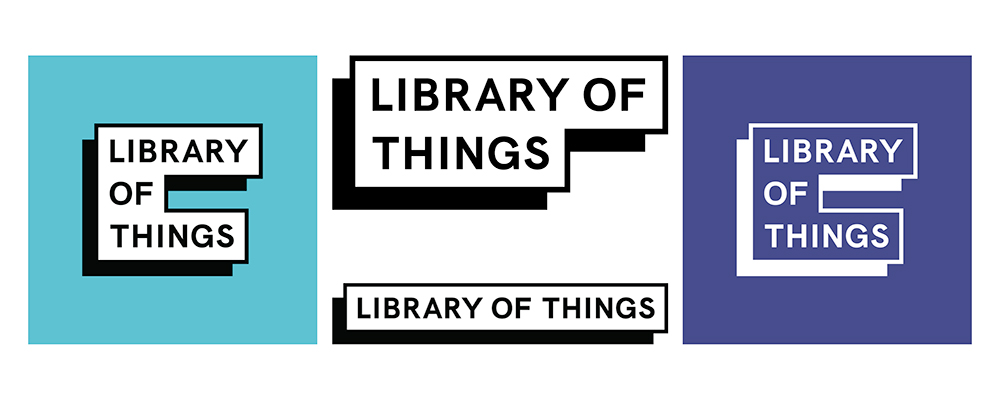As winners of the RSA Scaling Catalyst Grant, Library of Things’ first step was to invest in simple designs that other communities could copy and adapt when opening a library of their own. FRSA Rebecca Trevalyan tells us the latest from the newly reopened borrowing shop, and shares how the team overcame the design challenges.
‘Can I borrow the steam cleaner for the week?’
‘Of course Mario. It’s a fiver for 7 days. Let me show you how it works.’
‘And I need an ice cream cart, do you have one of those?’
‘Now that’s a new one! Could you use our wheelbarrow instead and fill it with ice?’
‘Perfecto, sì, I’ll do that. You have err..ice cream scoops?’
We were serving Mario, a local resident, originally from Naples, a once award-winning gelato maker and volunteer at the local community centre.
He’s one of 96 current members at Library of Things – our new community borrowing space that opened just weeks ago in West Norwood, South London.
After an 18-month search for an affordable space for the project, Library of Things finally found a space for its flagship home in an unlikely car park in West Norwood. Our hosts are social enterprise Community Shop, who use food surplus to tackle food poverty, whilst developing employability skills.
Just 6 weeks previously, the Library of Things team had been sitting in front of the 2 empty shipping containers, fresh from the docks in Essex.
‘How do we transform these into beautiful and practical borrowing spaces?’, we asked ourselves.
‘How do we have a look and feel that speaks to people of all ages, ethnicities and socio-demographic segments, but isn’t public sector?
‘How do we design graphics and furniture so that other communities can easily copy them when building their own Library of Things, whilst imprinting their unique local character?’
We looked each other in the eye. As a team of 3 directors, we acknowledged, we didn’t quite have that level of skill in-house. Sophia had advised brands on their strategies, before throwing that in to do Library of Things full-time. Emma had once decorated her room nicely. And Bex could whip up an inoffensive poster on Adobe. But we were going to need help here.
A week or so later, we were sitting in the offices of Lifeboat Studio – a new venture designing and making playful community spaces, and headed up by the charming Leo and Mark.
‘Our ask is simple’, we told them. ‘We want the beauty of the Apple Store experience, matched with the practicality of Argos. It can’t be hipster and it definitely can’t feel public sector. Oh and we have very little budget.’
Leo raised an eyebrow. He later shared with us what he was thinking: ‘They do realise we’re talking about a shipping container, right?’
Lifeboat rose to the challenge, however, here’s the view before and after their 10-day intervention:

Aside from a beautiful physical space, we were going to need graphics with mainstream appeal. If our mission was that anyone, anywhere, can borrow anything, we needed borrowing to be sexier than buying.
Enter James and Sean from Kind Studio – the creative genius behind the Brixton Pound cash machine, community cafes, and various record labels. Having taught themselves graphic design from the age of 11, James and Sean set up Kind Studio almost immediately after leaving university.
Sean, always bouncing with energy, came up with the idea of a logo in a box.
It would be simple and replicable, with room to be playful and change it around. It wouldn’t require a graphic designer to work on it each time. It would sit on any background. It would match the grid system of the pegboard Lifeboat had suggested for one shipping container wall.

Kind Studio’s pièce de resistance, though, was a beautiful set of icons that explains who we are and what we do at first glance. These appear in many places around the shop:
![]()
To complement the furniture and graphics, we needed technology that had all of the ease and comfort of Amazon Prime.
That’s where 'The Lend Engine' comes in. A few months previously, we’d had a call from Chris, a new dad from Bristol, successful inventory software entrepreneur, and lending library enthusiast. He’d started building software for a toy library in Bristol and wondered if we’d work with him to develop and refine the platform? You betcha Chris.
Chris and Design Director Sophia spent hours on the phone and email: ‘Could you tweak this? When are you building that? And what does it look like when we have another 5, 10, 50 Libraries of Things using the software in different locations? Hypothetically speaking, could a West Norwood member borrow something from Library of Things Dudley when they go to visit their nan?’
Our Lend Engine catalogue is now live – you can view our 223 items here. It’s a work in progress, but that slick experience is on the way!
Library of Things is still looking for donations of new items like carpet cleaners, tents, projectors, satnavs and digital cameras to its call for things – let them know if you or your company can help. Alternatively, donate money or your time here.

Be the first to write a comment
Comments
Please login to post a comment or reply
Don't have an account? Click here to register.